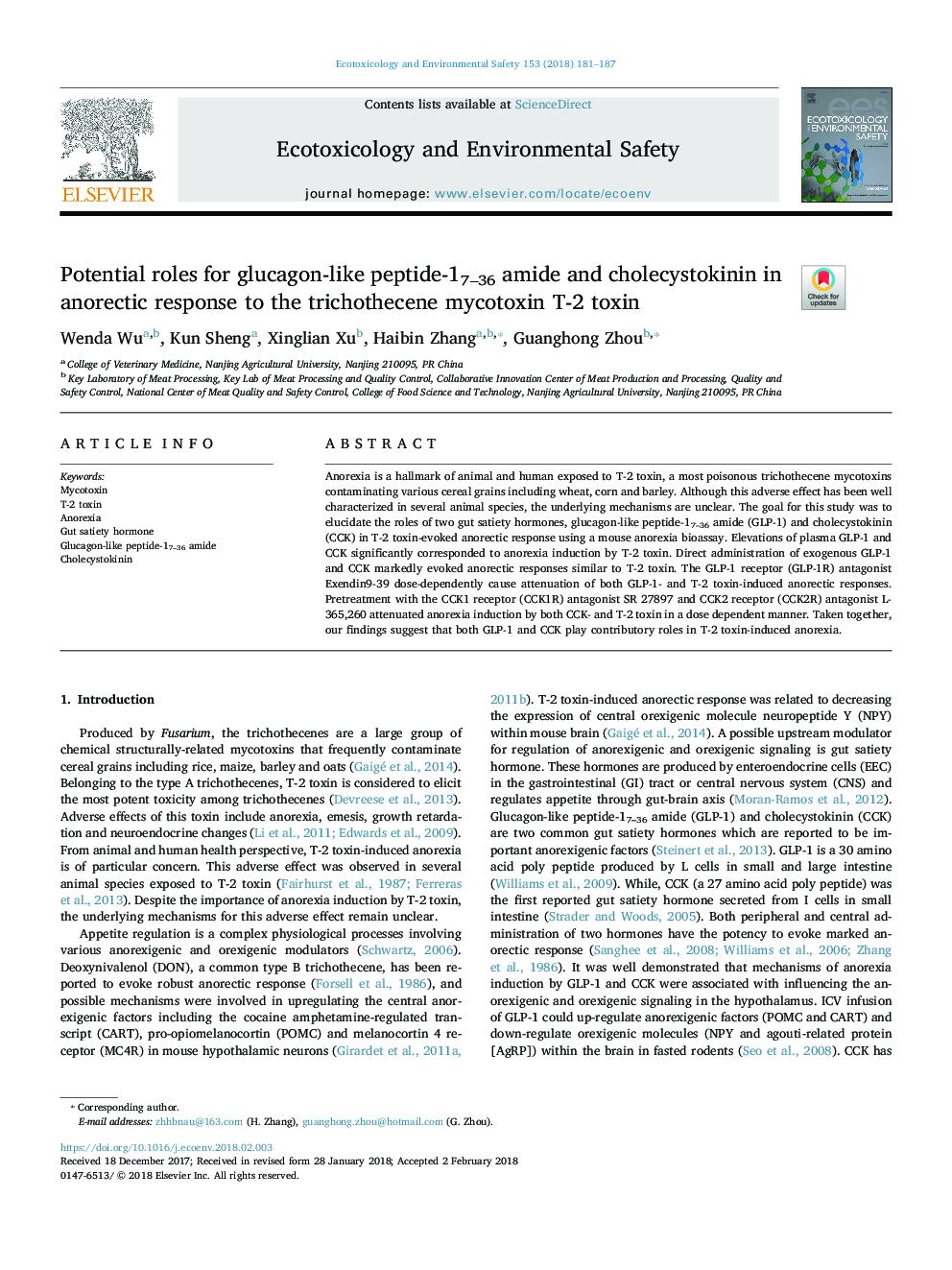| Article ID | Journal | Published Year | Pages | File Type |
|---|---|---|---|---|
| 8854195 | Ecotoxicology and Environmental Safety | 2018 | 7 Pages |
Abstract
Anorexia is a hallmark of animal and human exposed to T-2 toxin, a most poisonous trichothecene mycotoxins contaminating various cereal grains including wheat, corn and barley. Although this adverse effect has been well characterized in several animal species, the underlying mechanisms are unclear. The goal for this study was to elucidate the roles of two gut satiety hormones, glucagon-like peptide-17-36 amide (GLP-1) and cholecystokinin (CCK) in T-2 toxin-evoked anorectic response using a mouse anorexia bioassay. Elevations of plasma GLP-1 and CCK significantly corresponded to anorexia induction by T-2 toxin. Direct administration of exogenous GLP-1 and CCK markedly evoked anorectic responses similar to T-2 toxin. The GLP-1 receptor (GLP-1R) antagonist Exendin9-39 dose-dependently cause attenuation of both GLP-1- and T-2 toxin-induced anorectic responses. Pretreatment with the CCK1 receptor (CCK1R) antagonist SR 27897 and CCK2 receptor (CCK2R) antagonist L-365,260 attenuated anorexia induction by both CCK- and T-2 toxin in a dose dependent manner. Taken together, our findings suggest that both GLP-1 and CCK play contributory roles in T-2 toxin-induced anorexia.
Related Topics
Life Sciences
Environmental Science
Environmental Chemistry
Authors
Wenda Wu, Kun Sheng, Xinglian Xu, Haibin Zhang, Guanghong Zhou,
